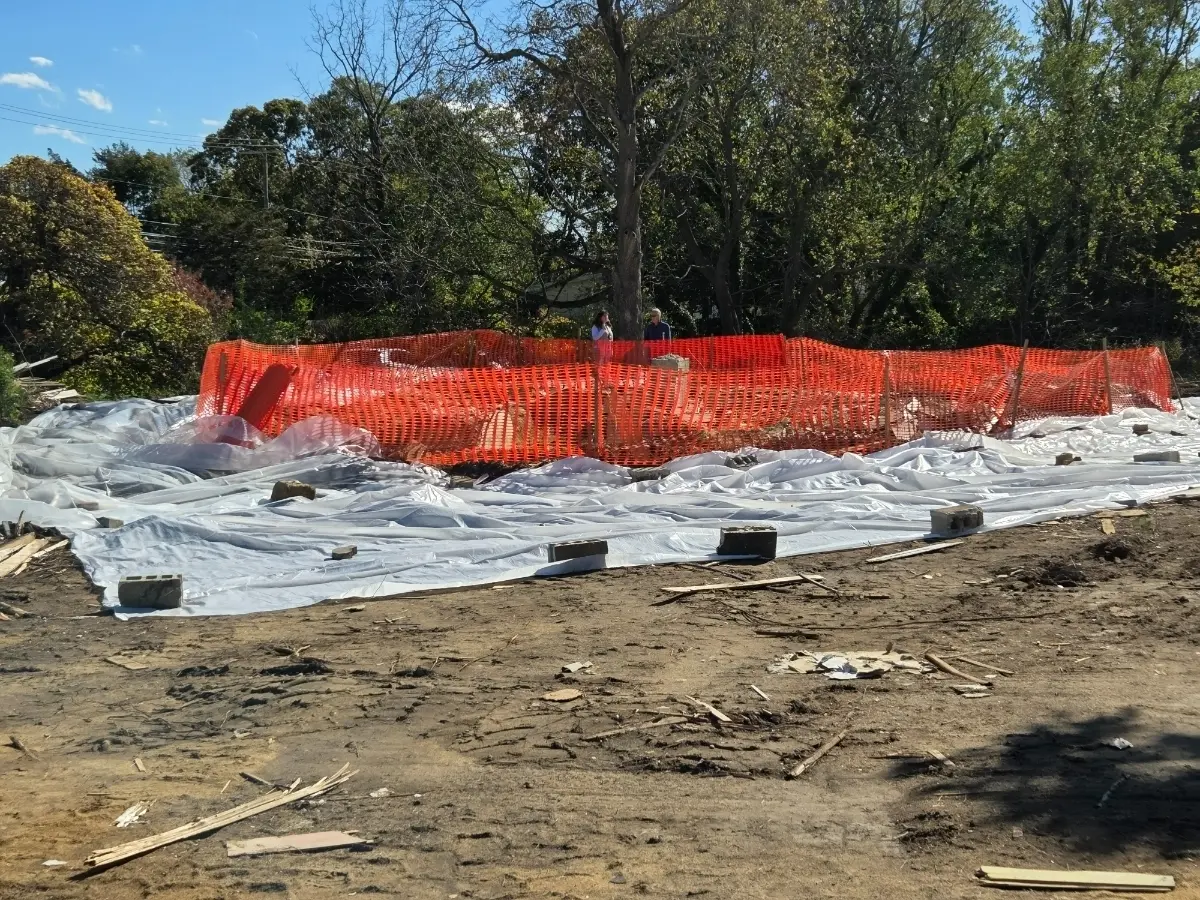Copyright Joliet, IL Patch

Debris removal of a house built in 1910 at Clifton and Batchelor has been stopped by state inspectors pending an investigation. TOMS RIVER, NJ — Work to turn a property at Clifton Avenue and Batchelor Street into a park has been halted by state inspectors amid concerns about asbestos contamination at the site. Inspectors from New Jersey's Department of Labor and the Department of Health on Wednesday were walking around the 4.3-acre site that Toms River purchased in late 2023 and has plans to turn into a community park with a playground. The state health department inspector told two Toms River residents and a Patch reporter who walked up to the site that the work had been halted. "You shouldn't be here," the inspector said. "This area is unsafe." The inspectors did not identify themselves and could not answer a reporter's questions under state protocols for media contact. But they told the men — one of whom had called state authorities on Monday — that the state health department had been notified on Tuesday of the concerns at the site. The Ocean County Health Department was contacted as well, said Brian Lippai, spokesman for the county health department. "We then contacted the Department of Labor and performed a site visit while the demo was taking place," Lippai said. "The DOL took samples for testing, and the results are pending at this point. There are specific removal protocols in place, so the asbestos debris doesn’t contaminate other properties." The property had two homes — one built in 1910 and one built in 1971 — and demolition began on Oct. 14 with the 1971 home, at 525 Batchelor St. Demolition of the 1910 home, at 554 Clifton Ave., began on Monday, and concerns about the work began spreading on social media that afternoon. The home had asbestos on its exterior, according to the property listing on Redfin.com. The Batchelor street home had wood siding, according to its Redfin listing. Online records do not indicate whether either home had asbestos in the interior. Mayor Daniel Rodrick said by phone on Wednesday said the township was told it must have someone observing the handling and disposal of the debris, making sure it is wet down before it is taken to the Ocean County Landfill in Manchester. The landfill is an authorized disposal site for asbestos-containing materials, according to the NJDEP. Rodrick said township engineer John Mele told him there was no indication of asbestos on the environmental report, and added that many homes built before 1980 in the area had asbestos shingles on the exterior. According to the state health department, there are about 3,000 types of commercial products contain asbestos. "In homes built prior to 1978, asbestos is most commonly found as thermal insulation on boilers and pipes. Unfortunately, it can also be found in many other household materials, which include: Attic insulation (blown in and sometimes vermiculite insulation) can contain asbestos Vinyl floor tiles - usually 9" X 9" tiles contain asbestos, but all tile should be tested to be sure Textured ceilings Glue that attaches floor tiles to concrete or wood (also called "mastic") Some forms of linoleum Window caulking or glazing Roofing materials HVAC duct insulation (usually found in corrugated or flat paper form) Siding material Plaster Fiber cement siding (usually 1/8” thick and 8’ X 4’, brittle) Corrugated heavy duty panels Boiler Lagging Hot water pipe insulation The federal Centers for Disease Control says asbestos exposure is a risk for everyone, but those at greatest risk are people who work with the material consistently and are exposed to the small fibers that can break off and get into a person's lungs. It has been linked to cancers including mesothelioma along with cancers of the larynx and throat, according to the CDC. The state Department of Environmental Protection has regulations that govern the removal and disposal of materials that contain asbestos, including that it should be wet down, bagged or wrapped in plastic or or placed in a sealed bulk container for transport for disposal, because demolition can cause the materials to get broken and release the fibers. Licensed asbestos removal contractors are usually hired to handle the process, the NJDEP said. "It is recommended that when entering into a contract with a licensed asbestos contractor for any demolition or renovation activity, the generator (owner/operator of the site) should assess and fully investigate the transportation and disposal responsibilities of the ACM (asbestos-containing material) before any generation of ACM is started at the site," the NJDEP says. Councilman David Ciccozzi, who was at the site Wednesday when a Patch reporter arrived, said one of the state inspectors told him the situation was very serious because none of the required protocols for asbestos removal appear to have been followed. Ciccozzi said the inspector told him any potential asbestos must be wet down with water during demolition to prevent fibers from becoming airborne. Ciccozzi said there are specific procedures for handling asbestos siding as well. He said the inspector told him that if sampling at the site shows asbestos contamination, the township would be required to remove several inches of dirt before it could proceed with building the playground, and that there are disposal protocols that would have to be followed for the dirt. "This could cost the town hundreds of thousands of dollars," Ciccozzi said. A message to Mele, who the county health department said was to meet with county and state inspectors on Wednesday, received an out-of-office reply. Rodrick announced the start of the demolition on Oct. 14, saying engineering on the new park was "nearing completion" and the town hopes to begin construction in the early spring. "Our new park will feature state-of-the-art playground equipment, including swings and play structures that will offer engaging activities for children of all ages," Rodrick said in a news release. He said the playground and park construction was anticipated to be covered by a $750,000 state grant.



